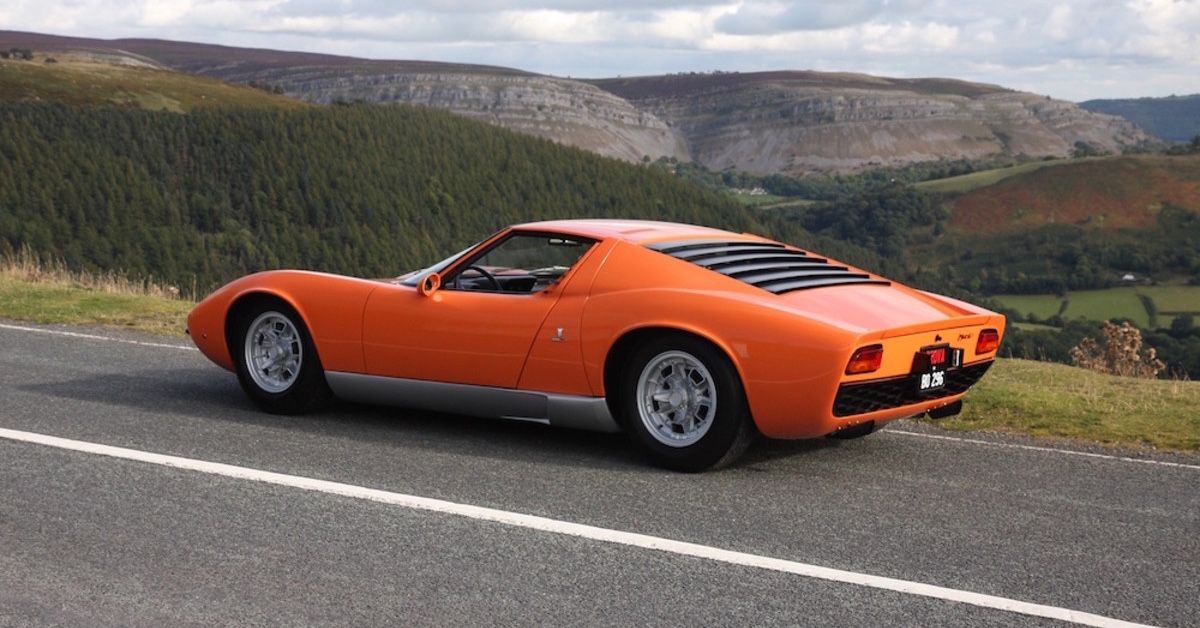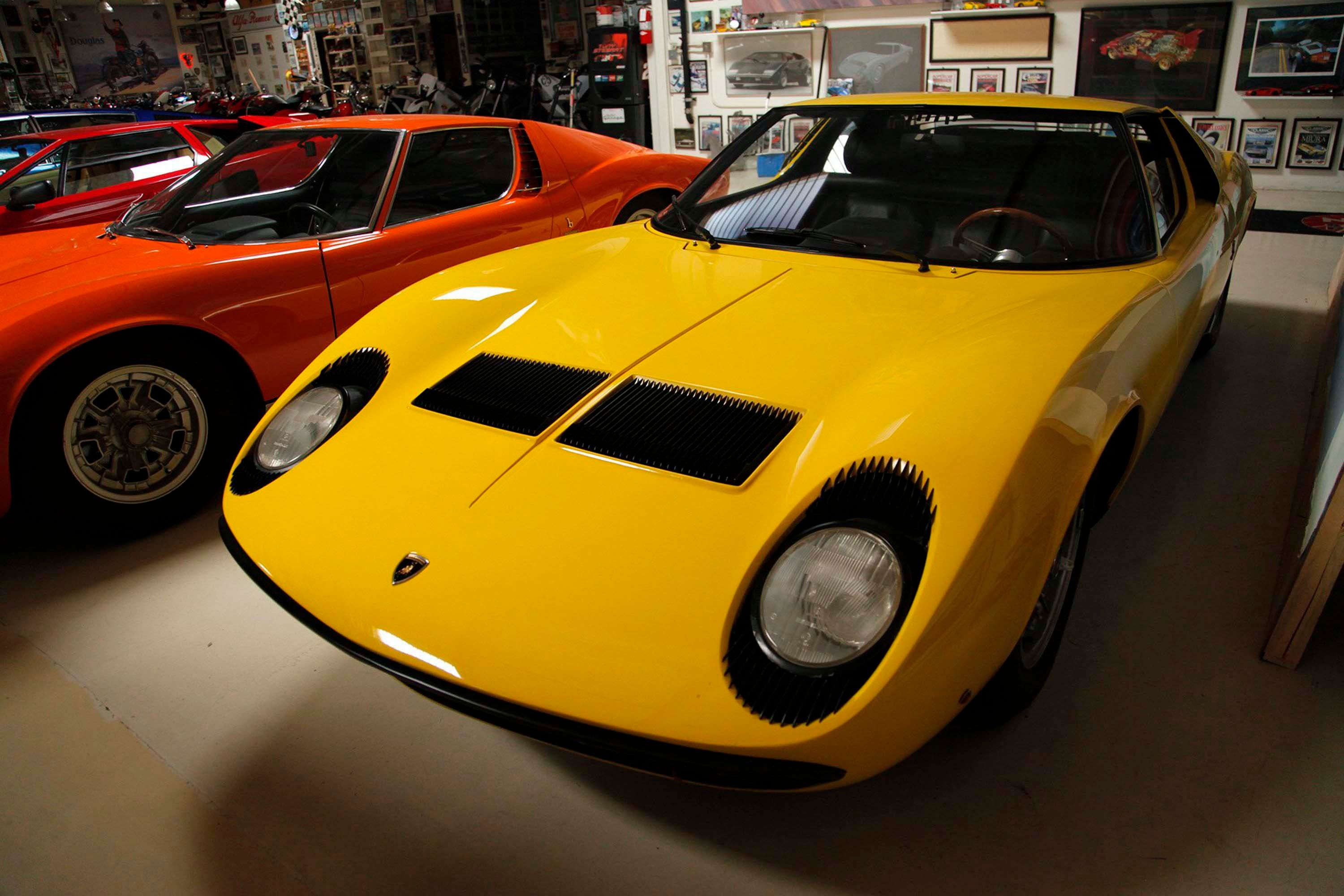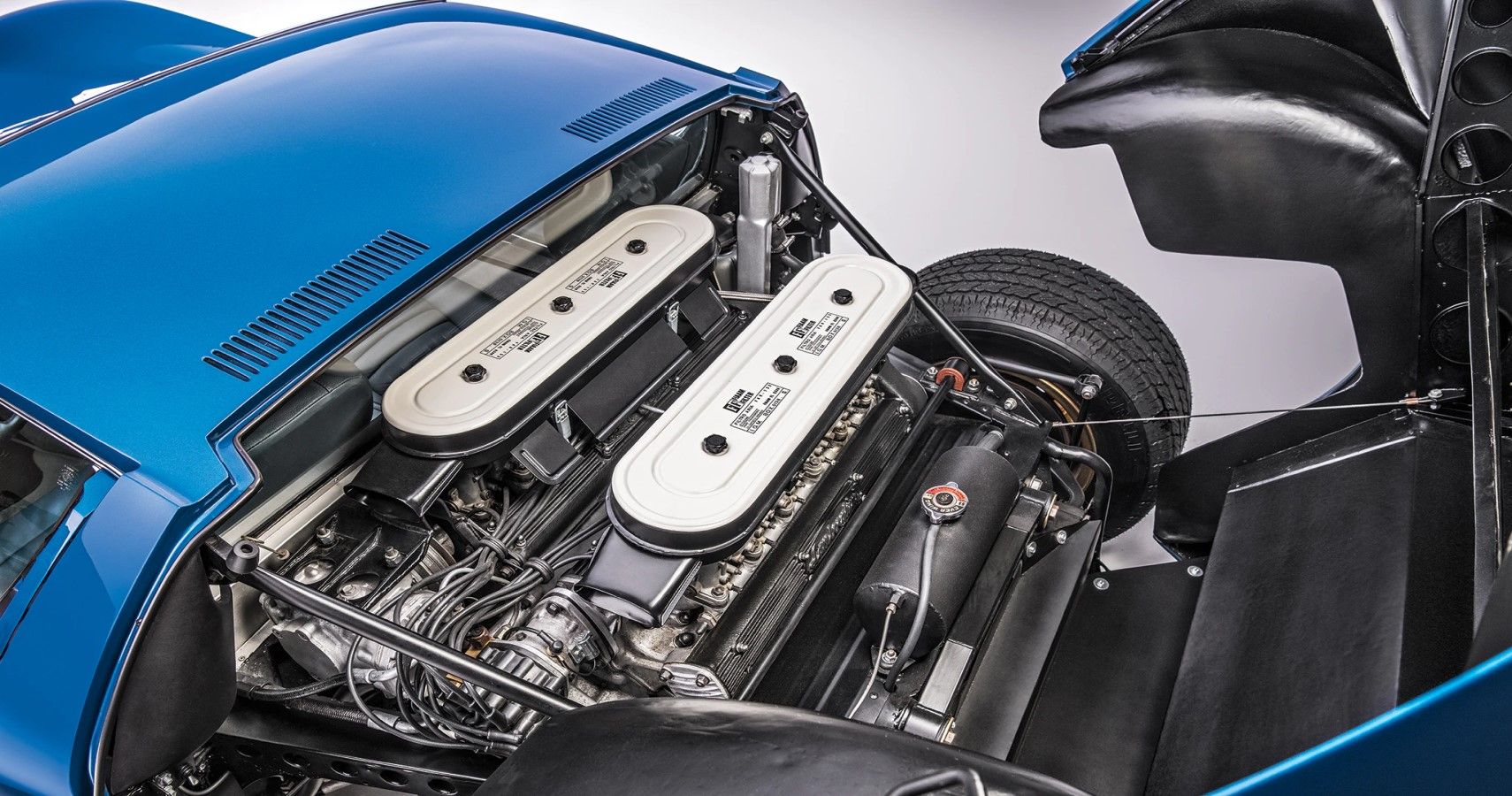Launching the world’s first supercar was what an ambitious startup like Automobili Lamborghini needed. Ferruccio Lamborghini, the founder, desired to build cars with better handling and practicality. So, he formed a company comprising young engineers and embarked on a quest to challenge Ferrari’s dominance.
Lamborghini’s bright crew nurtured the idea of a sports car with racing abilities. Despite having the speed of a race car, it would be driven on the road. And if anyone wanted theirs to be strictly a race car, the engineers would be happy to oblige. Although Ferruccio frowned upon a race car concept, he allowed the team to build the car.
Named after a famous Spanish fighting bull, the Miura is renowned for two major things. First, it started the “supercar conversation”. Second, it was the first supercar to work with a mid-engine layout, an unusual choice then.
Being a luxury-facing automaker, it shocked no one when the Miura came with a steep price. We regard the Miura as a game-changer and a vehicle whose relevance never waned.
This article documents Miura’s journey as one of Lamborghini’s best creations.
A Stroll Down Lamborghini’s Memory Lane

Long before he entered the automotive industry, Lamborghini’s founding father experimented with many ventures. Once, he repurposed supplies left from World War Two and made bestselling tractors. At some point, he designed and sold air-conditioners.
When he settled for car production, Ferrari was already a dominant force. Unfazed by the influence of Ferrari at the time, his ambition to start an automobile business stemmed from his dissatisfaction with Ferrari vehicles. He thought of them as cars destined for the racetracks, and not for city drives.
He found faults in the construction of Ferrari vehicles like defective clutches, ugly interior designs, and more. In 1963, he established Lamborghini to become a titan in the high-performance car segment. He also hoped that his models would lack the many faults linked to Ferrari cars.
While Ferruccio expressed skepticism about his engineers’ ideas, he didn’t forbid them from manifesting their goals. Left to him, Lamborghini wouldn’t have a hand in race cars, since it defeated his desire to make pure luxury vehicles.
Throughout 1965, senior Lamborghini engineers, Gian Paolo Dallara, Paola Stanzani, and Bob Wallace worked on the Miura in their spare time. They developed the first version, the P400, an elegant prototype that they believed would shock the world. And it did when they unveiled the chassis in 1965 at the Turin Auto Show and the prototype in 1966 at the Geneva Motor Show.
Interestingly, the prototype had no engine. Because they finished the design a few days before the auto show, they could not install an engine that fits flawlessly. They used ballast to serve as an actual engine, just so they could show the world as planned.
Following the warm welcome in 1966, plans were underway for mass production of the Miura. When it made a special appearance in a 1969 movie aptly named “The Italian Job”, everyone wanted a piece of this beauty.
What Was The P400 Like?

When mass-produced, the P400’s design was based on the same platform as the 400GT. It possessed a 3.9-liter V12 transversely-mounted engine that packed up to 345 hp. Only 275 units of this variant hit the market at a price that only the rich could pay for.
The P400S Came With Some Noticeable Adjustments
The next variant, P400S, appeared in 1968 at the Turin Motor Show. Bearing mild alterations like new power windows and a newer, brighter chrome finish, it thrilled many car enthusiasts whose attraction to the supercar superseded the outrageous price.
It had other upgrades like an extra 20 hp to increase the output and new 215/70VR15 Pirelli Cinturato CN12 tires.
The P400SV Received An Engine Upgrade

Launched in 1971, it came with yet another engine upgrade (385 hp). In addition, the engineers insulated the gearbox’s lubrication system from the engine. They did this so that different types of oil could be used.
A significant change was the omission of the eyelashes that adorned the headlamps like in earlier editions. Only 150 units of the P400SV were made available for purchase.
The P400 Jota’s Tragic Story
Bob Wallace, one of the engineers behind the Miura’s development, wanted to solve an issue. None of the previous Miuras satisfied certain FIA racing regulations, so he designed the P400 Jota. He made only one unit that featured numerous changes, mostly in areas of the chassis and engine.
The engine could produce between 418 and 440 hp, a massive upgrade. When pleased with the trial runs, a buyer took delivery of the Jota. Unfortunately, he crashed it in Brescia, and it burned entirely. Efforts to honor the Jota include the release of a P400S variant ordered by the Jota’s owner, Walter Ronchi.
How Much Does The Miura Cost Now?
Lamborghini made 746 units of the Miura cutting across variants like the P400 and the Roadster. Due to its limited availability and luxury status, you shouldn’t expect a modest fee. A 1968 Miura costs between $1,750,000 and $1,813,350 today.
Read Next
About The Author
